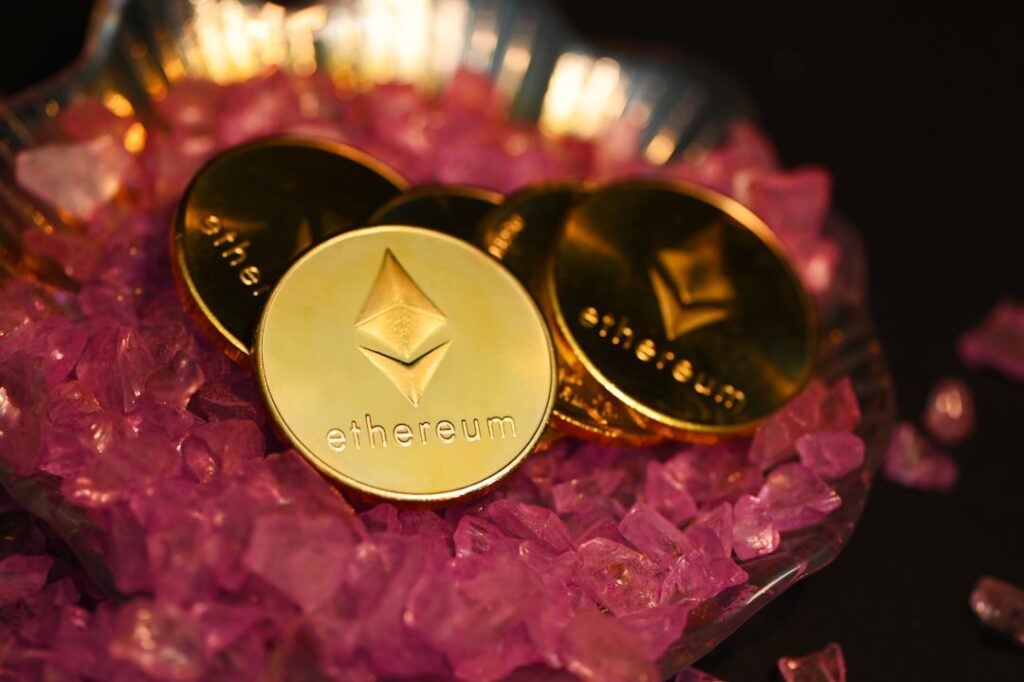Few people have drawn as much attention in the constantly changing cryptocurrency scene as Coinbase CEO Brian Armstrong. Coinbase is at the vanguard of the cryptocurrency revolution as one of the top marketplaces for purchasing, selling, and trading virtual currencies. Armstrong’s long history in the business and his influence on the development of the market’s infrastructure make his predictions about the future direction of Bitcoin’s price stand out.
Key Takeaways
- Coinbase CEO predicts Bitcoin price to reach 0,000 in the next five years, citing increasing institutional interest and adoption as key factors.
- Bitcoin is often compared to gold as an investment asset due to its limited supply and store of value characteristics.
- Factors influencing Bitcoin price according to Coinbase CEO include macroeconomic trends, regulatory developments, and technological advancements.
- Factors influencing gold price according to Coinbase CEO include inflation, geopolitical uncertainty, and central bank policies.
- Coinbase CEO’s Bitcoin price prediction could potentially impact the gold market by diverting investment interest away from traditional safe-haven assets.
His audacious forecast that Bitcoin’s price might soar to previously unheard-of heights in the upcoming years recently made headlines. This forecast has generated debates among analysts, investors, and enthusiasts, leading to a more thorough investigation of the variables that may affect the price of Bitcoin. Armstrong’s forecast is based on a thorough examination of market dynamics, technological developments, and macroeconomic trends; it is not just conjectural. His opinions are consistent with the cryptocurrency community’s broader belief that Bitcoin is a revolutionary financial tool rather than merely a digital asset.
Understanding the ramifications of Armstrong’s prediction is essential as conventional investors seek to diversify their portfolios with alternative assets more and more. This article examines the subtleties of Armstrong’s prediction by contrasting Bitcoin and gold as investment assets & looking at a number of variables that may affect their prices. As alternative investment assets, bitcoin and gold are frequently contrasted, each with distinct qualities and allure. Because of its inherent qualities & scarcity, gold has been valued as a store of wealth for centuries.
Its reputation as a safe haven asset has been cemented by its physical characteristics & historical significance as a hedge against inflation and economic uncertainty. Gold attracts investors who are looking for tangible stability during difficult times. Due to its extensive network of exchanges and lengthy trading history, the global gold market is reputable & well-established. On the other hand, Bitcoin is a relatively recent development in the world of investing. It debuted in 2009 and used blockchain technology to introduce the idea of decentralized digital currency.
| Year | Coinbase CEO’s Bitcoin Price Prediction | Gold Price |
|---|---|---|
| 2020 | 20,000 | 1,800 |
| 2021 | 100,000 | 1,900 |
| 2022 | 250,000 | 2,000 |
Bitcoin’s solely digital existence, in contrast to gold, can be both a benefit and a drawback. People who respect privacy and independence in their financial transactions will find its decentralized structure appealing as it enables peer-to-peer transactions without the need for middlemen. The price of Bitcoin can change significantly depending on market sentiment and regulatory developments, so this very feature also adds to its volatility. Beyond their physical versus digital characteristics, Bitcoin and gold are compared in terms of their contributions to portfolio diversification.
In a contemporary setting, Bitcoin is becoming more widely acknowledged for its potential to offer comparable advantages to gold, which has long been seen as a hedge against inflation and currency devaluation. According to some investors, Bitcoin’s 21 million coin limit reflects the scarcity of gold, making it “digital gold.”. Because institutional investors see Bitcoin as a competitive alternative to conventional assets, they are starting to allocate a portion of their portfolios to it, which has given rise to this narrative. According to Brian Armstrong, a number of important factors will have a big impact on the direction of Bitcoin’s price in the upcoming years.
Institutional adoption is one of the main factors he mentions. Institutional investors bring significant capital & credibility to the cryptocurrency space as more of them join. Because demand for Bitcoin exceeds supply, this investment infusion may push its price higher. Armstrong cites the increasing number of publicly traded corporations, hedge funds, and family offices investing in Bitcoin as proof of this trend.
Armstrong also highlights the importance of clear regulations. Historically, the cryptocurrency market has been beset by regulatory uncertainty, which can cause volatility & hesitancy among possible investors. On the other hand, trust in Bitcoin might grow as governments everywhere start to create more transparent regulations for virtual currencies.
According to Armstrong, positive regulatory changes may open the door for Bitcoin to be widely accepted as a valid asset class. More retail investors who have been holding out because of security and legal concerns may be drawn in by this change. Future developments in technology will also have a significant impact on the price of bitcoin. According to Armstrong, scalability solutions like the Lightning Network, advancements in blockchain technology, & improved security measures can boost user confidence and encourage wider adoption. Demand for Bitcoin is further increased as transaction speeds and fees drop, making it more useful for daily use.
Also, developments like blockchain-based decentralized finance (DeFi) applications have the potential to give Bitcoin new applications, extending its usefulness beyond simple speculation. Although Armstrong’s observations mostly center on Bitcoin, he also notes a number of elements that affect gold prices, elements that may also have an indirect effect on the cryptocurrency market. Macroeconomic factors, especially central bank-set interest rates and inflation rates, are a major influence. As a safe haven asset, gold has long been seen as a hedge against inflation. Investors gravitate toward it when inflation increases or real interest rates are low or negative.
According to Armstrong, gold prices may experience an increase if inflation keeps rising as a result of supply chain disruptions or expansive monetary policies. Also, geopolitical tensions have a significant impact on gold prices. War, trade disputes, or political unrest are examples of events that can raise demand for gold as investors flee unpredictability. Armstrong notes that when investors look for stability in the midst of chaos, gold prices frequently rise during crises like the COVID-19 pandemic. This conduct emphasizes gold’s standing as a secure investment in times of turbulence.
Changes in central bank policies can also have a big effect on gold prices. As a component of their monetary policy plans, central banks maintain sizeable gold reserves. An increase in demand for gold among investors looking to protect their wealth may result from central banks’ decisions to expand their gold holdings or implement quantitative easing policies that devalue fiat currencies. According to Armstrong, the prices of gold and bitcoin may be impacted at the same time by the complex web of influences created by these macroeconomic factors.
Gold and Bitcoin have a complicated and multidimensional relationship; changes in one market may have repercussions in the other. Bitcoin has the potential to attract capital away from conventional safe-haven assets like gold if Brian Armstrong’s prediction about its price comes true and it experiences a significant increase. With more investors seeing Bitcoin as a genuine store of value comparable to gold, they might decide to transfer money from their gold holdings to Bitcoin.
Younger investors may be more likely to embrace digital assets than traditional ones, making this shift especially noticeable. Given the generational gap in investment preferences, millennials and Gen Z may choose Bitcoin over traditional assets like gold as they become more financially involved due to its growth potential and technological appeal. There may be less demand for gold and consequently lower prices if this trend persists. Further exacerbating the effect on the gold market could be the acceleration of institutional adoption of Bitcoin, as Armstrong anticipates. The perception that Bitcoin is not only an alternative asset but also better than gold could be shaped by significant investments from institutional players.
Investment strategies that historically depended largely on gold for stability may be reallocated as a result of this change in perception. On the other hand, changes in the price of gold can also have a variety of effects on the Bitcoin market. The argument that both assets act as hedges against inflation and economic instability may be strengthened if gold prices sharply increase as a result of macroeconomic variables or geopolitical tensions, as was previously mentioned. A rise in interest in cryptocurrencies as a substitute store of value may result from investors viewing both gold and Bitcoin favorably in such circumstances.
It might discourage some investors from investing in cryptocurrencies altogether, though, if gold prices continue to rise while Bitcoin prices stay unstable or stagnant. Potential purchasers may give traditional assets precedence over digital currencies due to the belief that gold is a more reliable investment. This dynamic emphasizes how crucial investor sentiment is; if gold confidence rises while Bitcoin skepticism endures, it may impede Bitcoin’s upward trajectory. Also, a situation where traditional assets regain favor over cryptocurrencies like Bitcoin may arise if central banks keep adding to their gold reserves or implement measures that increase its value, like cutting interest rates. Instead of negotiating the risks involved with digital currencies in these situations, investors might choose the perceived safety of gold. When market trends are examined, clear trends emerge in the historical behavior of the prices of gold and bitcoin.
Bitcoin has historically shown more volatility than gold; whereas gold typically moves steadily based on macroeconomic indicators, the price of Bitcoin can fluctuate significantly in a short amount of time due to news events or market sentiment. For example, the price of Bitcoin has shot up or down quickly during times of increased speculation or regulatory announcements affecting cryptocurrencies. But during uncertain economic times, there has been a discernible trend in recent years toward a stronger correlation between the price of gold & Bitcoin. For instance, as investors sought solace from market turbulence during the COVID-19 pandemic in 2020, both assets experienced notable price increases. This phenomenon implies that although Bitcoin is a speculative asset and gold is a traditional safe haven, they may have different functions within an investment portfolio but may react similarly in specific situations.
Institutional investors are also becoming more interested in Bitcoin as a result of technological developments in the cryptocurrency space; they are starting to see it as a component of their long-term investment strategies rather than just a speculative asset. This change has helped give Bitcoin more credibility in the financial markets & sparked conversations about its possible place next to more established assets like gold. The future price prediction made by Brian Armstrong for Bitcoin has important ramifications for investors navigating both traditional and cryptocurrency markets. A significant increase in Bitcoin’s value is possible as institutional adoption increases and regulatory clarity improves; this could change how people invest in different asset classes.
Investors need to be aware of market developments & ready for the volatility that exists in the gold and bitcoin markets. The way in which these two assets interact highlights how crucial portfolio diversification is. Given Armstrong’s upbeat outlook, some might decide to put more money into Bitcoin, but others might stick with gold because of its track record of stability during recessions. Making wise investment choices in an increasingly complicated financial environment ultimately depends on comprehending the complex relationships between these assets.

